The XPG Fusion Titanium 1600 PSU Review: Outrageous Power, Outstanding Quality
by E. Fylladitakis on March 30, 2023 8:00 AM EST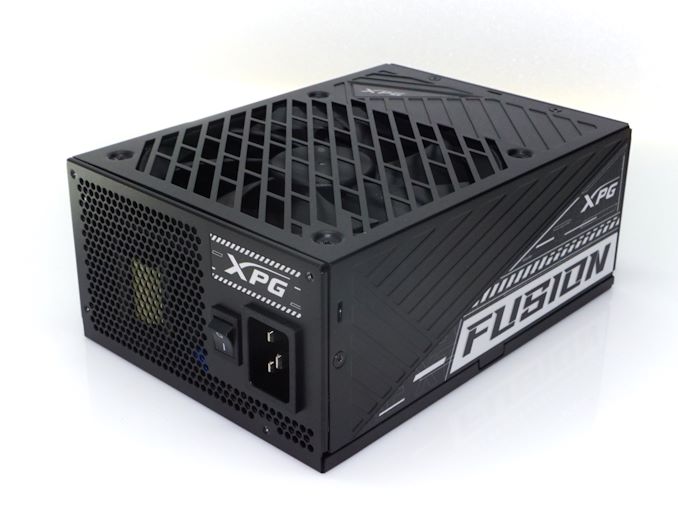
One of the perks of normality largely returning to the PC components market now that the crypto mining bubble has popped has been a big improvement in component availability. Video cards were of course the biggest change there – even if prices on the latest generation remain higher than many would like to see – but crypto farms were also soaking up everything from CPUs and RAM to power supplies. So after a period of almost two years of high-powered PSUs of all flavors being hard to come by, the PSU market is, at last, also returning to normal.
The collapse of crypto mining and underlying improvement of electronics components has also meant that high-power PSU designs have reverted, in a sense, to a more balanced portfolio. PSU vendors are finally making some fresh investments in high-end, high-efficiency designs – PSUs that crypto miners would have never paid the premium for. Especially with the launch of the new ATX 3.0 standard and its 12VHPWR connector, there’s an opportunity for a new generation of PSUs to make their mark while powering the latest video cards.
There are few power supplies where this is more apparent than XPG’s new Fusion Titanium 1600. The sole member of its class thus far, the Fusion is a true flagship-grade PSU with the electronics quality to match. Built by Delta Electronics, the XPG Fusion makes liberal use of Gallium Nitride MOSFETs in order to deliver a monstrous 1600 Watts of power at 80 Plus Titanium levels of efficiency. All the while this will also be one of the first high-powered ATX 3.0 power supplies, offering two 12VHPWR connectors – making it suitable to drive two high-end video cards – which is no small feat given the power excursion requirements that come with the ATX 3.0 specification.
To that end, today we are thoroughly exploring everything that makes the XPG Fusion stand out from the crowd. From its oversized chassis to its almost absurd voltage regulation quality, it’s a power supply that few customers will ever need, but certainly makes its mark across the PSU design ecosystem.
| XPG Fusion Titanium 1600 Power Specifications ( Rated @ 50 °C ) |
|||||
| RAIL | +3.3V | +5V | +12V | +5Vsb | -12V |
| MAX OUTPUT | 20A | 20A | 133.3A | 3.5A | 0.3A |
| 120W | 1600W | 17.5W | 3.6W | ||
| TOTAL | 1600W | ||||
| 80 Plus Rating | Titanium | ||||
| AC INPUT | 100 - 240 VAC, 50 - 60 Hz | ||||
| MSRP | $750 | ||||
Packaging and Bundle
We received the XPG Fusion in a large cardboard box that instantly hints at the dimensions of the sizable PSU. The artwork is relatively basic, but the striking red color does not go unnoticed. Basic performance and compliance information is printed on the sides and rear of the box. Inside the box, the PSU is protected between thick packaging foam.
XPG, for those unfamiliar with the company, is the gaming brand of ADATA Technology, one of the industry's major PC parts suppliers. That gaming lineage (and anime mascot) makes for something of an odd pairing for this specific PSU, since these days multi-GPU systems are almost always professional graphics and AI systems – the death of SLI means there's no need to pair up GPUs for gaming systems. Still, as ADATA's gaming brand, XPG has earned a reputation for delivering higher quality products than the ADATA brand itself, so it makes a lot of sense to use it to sell this premium power supply. And reading things slightly more cynically, it doesn't hurt that for deep-pocketed gamers who can afford to build a system that spares no expense, the Fusion gives XPG something to upsell those customers on.
Bundled alongside the XPG Fusion, we found six cable straps, four mounting screws, and an AC power cable. The bundle is very frugal for a product of this price range but attention needs to be given to the AC power cable, which has an IEC C19 connector instead of the common IEC C13 connector. XPG was forced to use the C19 connector as the input current of the PSU can surpass the rated current capacity of the C13 connector.
Expectedly, the XPG Fusion is a fully modular design, allowing for the removal of every DC power cable, including the 24-pin ATX connector. All of the cables are completely black, with ribbon-like black wires and black connectors. Only the 24-pin ATX cable differs, which is sleeved. The Fusion Titanium 1600 is the first PSU we have seen with two 12VHPWR connectors.
At this point, we should also mention the presence of a small “OC Link” cable. That cable can be used to daisy chain multiple XPG Fusion units together, allowing them to operate simultaneously. This obviously is not a feature most users will be concerned with but something to draw the attention of users building rendering and/or mining farms.
| XPG Fusion Titanium | ||
| Connector type | Hardwired | Modular |
| ATX 24 Pin | - | 1 |
| EPS 4+4 Pin | - | 2 |
| EPS 8 Pin | - | - |
| PCI-E 5.0 (12VHPWR) |
- | 2 |
| PCI-E 8 Pin | - | 10 |
| SATA | - | 12 |
| Molex | - | 4 |
| Floppy | - | 1 |
The XPG Fusion Titanium 1600 PSU
External Appearance
In an era where every manufacturer aims to design the smallest PSU possible, the XPG Fusion Titanium 1600 is practically profane. The monstrous chassis is 210 mm long and users will definitely have to double-check the clearances of their case to ensure compatibility. Regardless of the size of the case, typical ATX units are 60-70 mm shorter, so there may be an obstruction that prevents the installation of such a long PSU.
The chassis of the Fusion Titanium 1600 is entirely custom. It is sprayed with a satin black paint that is very smooth and beautiful but also prone to fingerprint marks. The fan finger guard is a part of the chassis itself. Embossed geometrical shapes and patterns can be found on both the bottom and sides of the chassis. Decorative stickers cover half of each side and the sticker with the unit’s electrical certifications and specifications covers part of its top side.
A typical on/off switch can be seen at the rear side of the unit, beside the power connector. The power connector is an IEC C20 instead of the commonly found IEC C14. The front side of the unit is littered with the connectors for the modular cables. There was not much room left for a legend so XPG painted basic headers directly on the chassis and next to each group of connectors.
Internal Design
The fan responsible for the cooling of the XPG Fusion Titanium is the Hong Hua HA13525H12SB-Z. Hong Hua is an established manufacturer of quality fans, but we found no information online about this particular model. Nonetheless, we established that it has a maximum speed of about 2450 RPM and it features a dual ball bearing design. These designs are not the quietest but they are the most reliable, and XPG could not take risks after backing up the unit with a 12-year warranty.
XPG openly advertises that the XPG Fusion Titanium is the outcome of their collaboration with Delta Electronics, a highly reputable OEM with decades of experience in power electronics. Although we rarely see their designs in consumer-grade PC PSUs, Delta Electronics has been around for over 50 years and they currently are one of the largest companies in the field, with R&D offices and factories worldwide.
A mere glance at the insides of the XPG Fusion Titanium 1600 PSU is enough for anyone with a basic grasp of how typical PC PSUs are designed to realize that this unit is vastly different. Much like every other PC PSU, we start with a filtering stage that consists of six Y capacitors, two X capacitors, and two filtering inductors and leads to a dual input rectifying bridge configuration. The rectifying bridges are not the typical versions that we usually find attached to a heatsink, but rather two Infineon IPDQ60R010S7, which are substantially more efficient that typical bridge rectifiers. They are placed on a vertical board without a heatsink at all, simply because their losses are so low there is no need for a heatsink.
The APFC circuit also is different than what we usually encounter. Instead of two MOSFETs and a diode, there are four MOSFETs and no diode (Totem Pole topology). Two huge 450V/820μF capacitors from Rubycon and two large encased coils form the passive components of the APFC. The active APFC components are on a second vertical daughterboard next to the edge of the unit with an aluminum heatsink attached directly to them. The heatsink is literally touching the side of the unit so the airflow will be extremely limited but we suspect that the APFC MOSFETs (Gallium Nitride, Infineon IGT60R070D1) hardly need any cooling at all.
Moving ahead, the design gets ever more unique. The primary inversion side is a relatively typical LLC resonant circuit, with the major difference being the use of four extremely high-efficiency Gallium Nitride FETs. These feed the highlight of this platform, the planar transformer. We will not be seeing planar transformers used on other platforms anytime soon as they are patented by Delta Electronics. Their primary advantage over traditional transformers is the extremely high power density, as planar transformers can handle the same output within less than a quarter of the space required by typical transformers. This could be very handy if Delta Electronics decide to develop very high-density units, but it arguably was not much of an advantage here, as the Fusion Titanium 1600 came out extremely long anyway.
After the planar transformers, typical power MOSFETs generate the 12V line. There is only one major output, with the multiple 12V lines being the product of multiple OCP protections. The current limit per line can be set via software, or individual OCP protections can be disabled in favor of a single massive 12V rail. As expected, the secondary 3.3V and 5V lines are generated via DC-to-DC circuits. Large bars transfer the power from the main PCB to the PCB holding all of the connectors. All of the secondary side capacitors are solid-state and are provided by Nippon Chemi-Con.


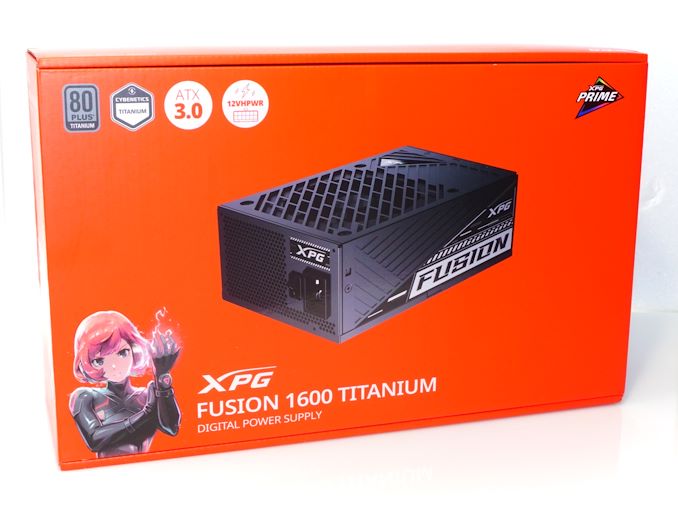
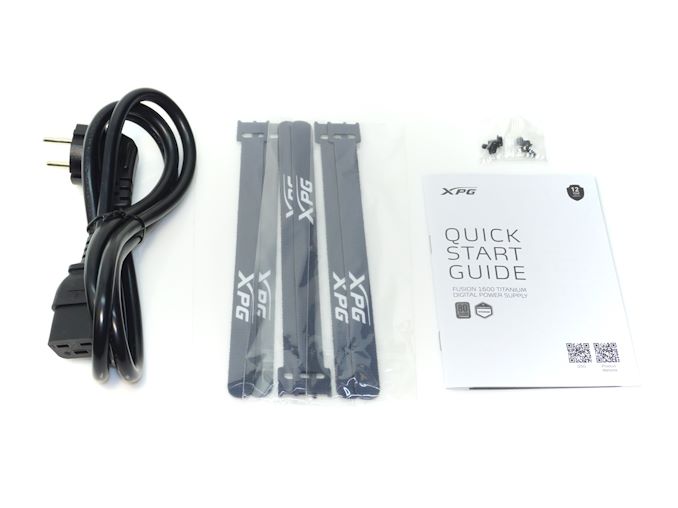

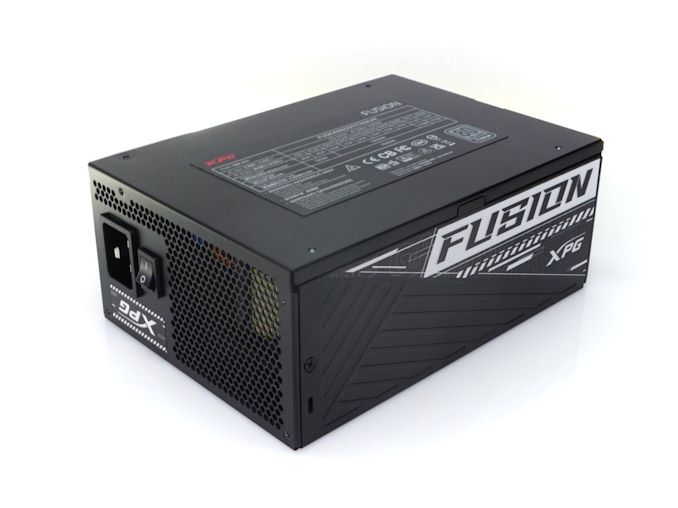
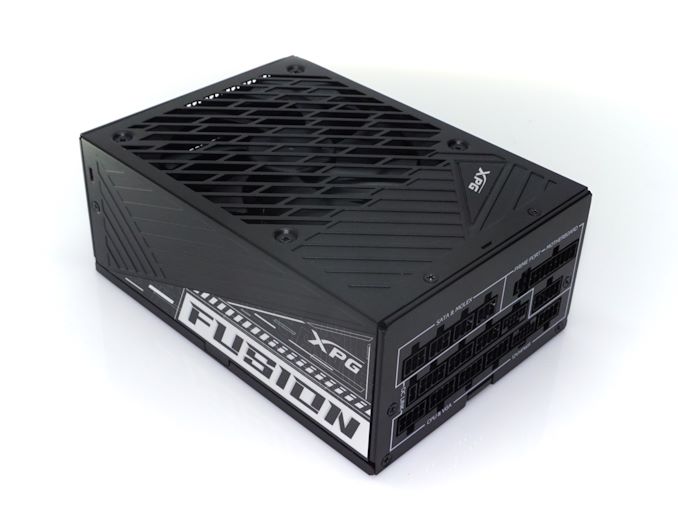
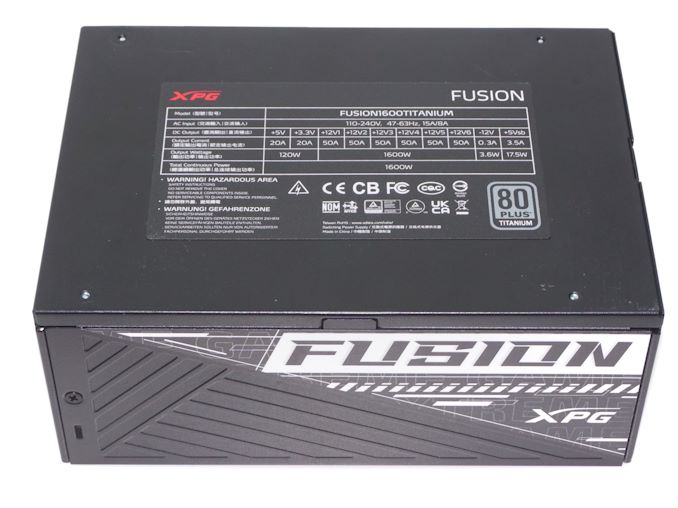
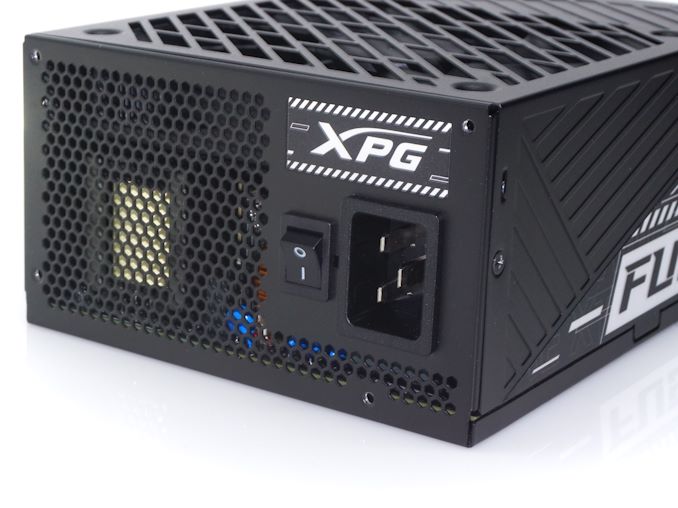
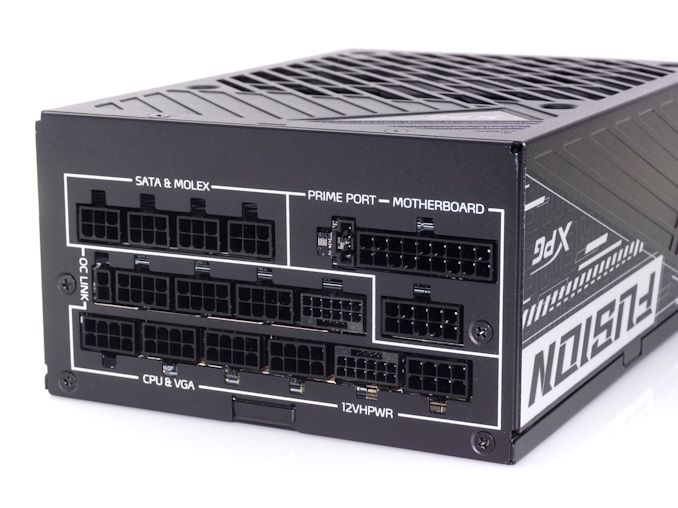
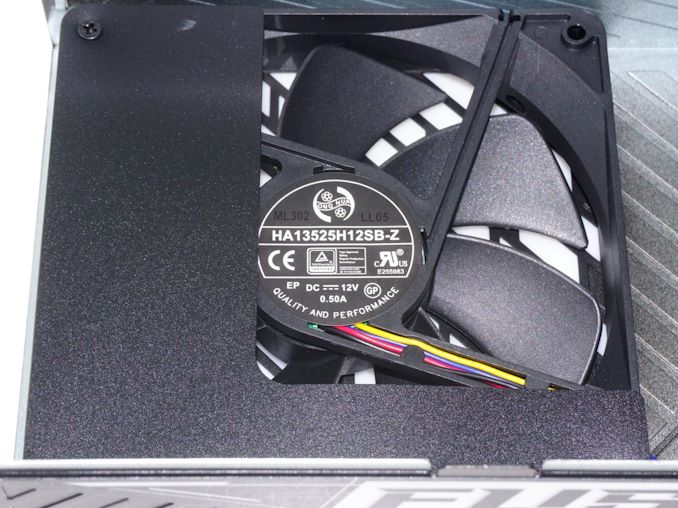

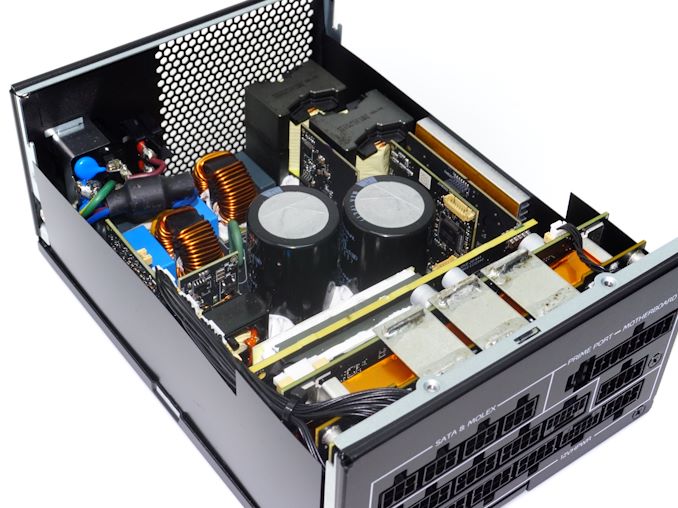
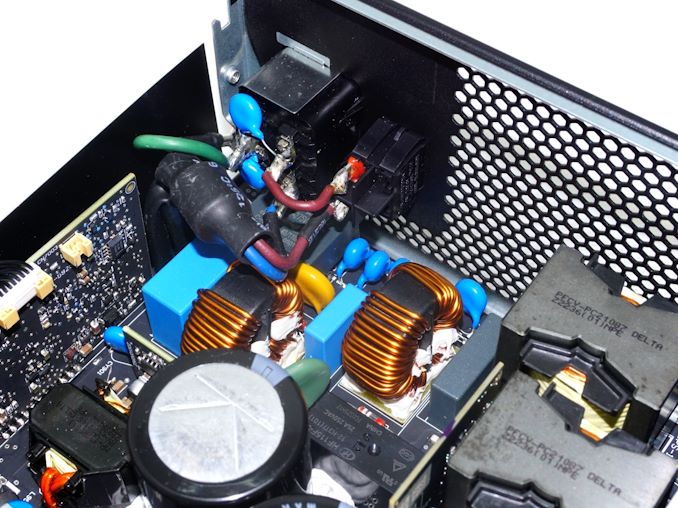
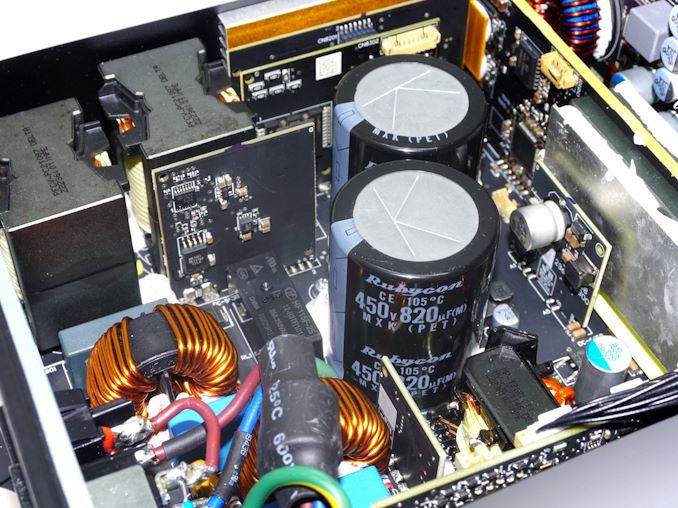
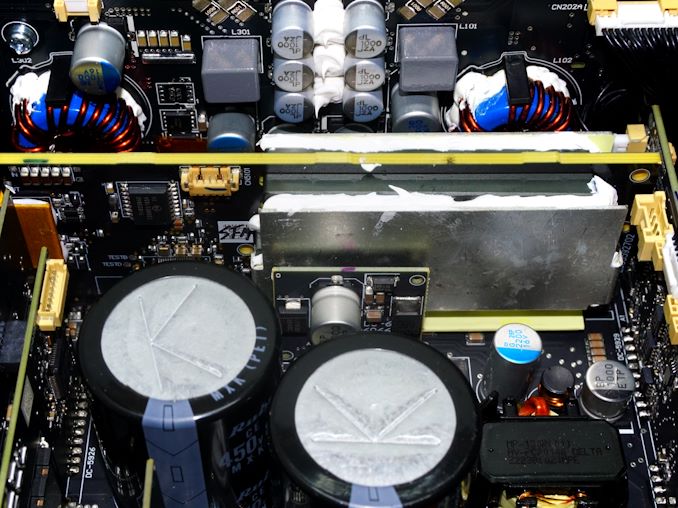
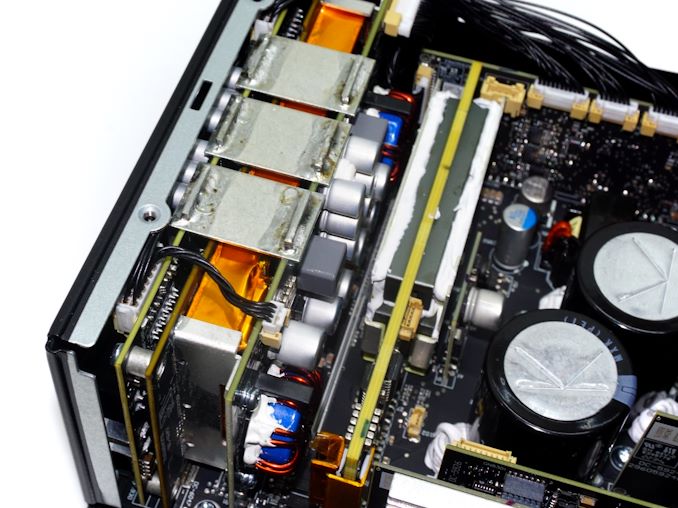








17 Comments
View All Comments
Techie2 - Thursday, March 30, 2023 - link
It's unfortunate that it is so long as it prevents use in many if not most PC cases.TheinsanegamerN - Monday, April 3, 2023 - link
What century are you from? "most" cases LMFAO. Most PC cases today are gigantic and can easily handle a PSU like this.hubick - Thursday, March 30, 2023 - link
Woulda been nice to see a comparison against my older Corsair AX1600i. I'll keep this one in mind for my next build.E.Fyll - Thursday, March 30, 2023 - link
I intentionally avoided that because the AX1600i is not ATX 3.0 compliant. A basic comparison can be done though by cross-checking the two reviews.https://www.anandtech.com/show/12645/the-corsair-a...
emike09 - Thursday, March 30, 2023 - link
Mining is back with Kaspa, so big PSUs are still a nice thing to have for those that mine. Outside of mining, having PSUs over 1Kw are also becoming a necessity. New Sapphire Lake-X CPUs are power monsters, The RTX 4080 and 4090 are monsters.I have an overclocked i9-10920X and RTX 4090, as well as a few NVMe drives, a several 10TB HDDs, and a bunch of fans, and I hit over 1200w during both gaming and creative workloads. My EVGA 1000w PSU is a beast though, and my KiloWatt meter sometimes shows a draw up to around 1250w from the wall during the heaviest draws without ever hitting OCP.
Makes me want a PSU rated for around 1300-1600w.
Threska - Thursday, March 30, 2023 - link
Soon people will be tripping breakers.pistonsmatter - Tuesday, April 4, 2023 - link
You're only allowed to pull 1,440 watts from a 120V 15a breaker over any period of time, so this PSU is not safe to run on a 15A outlet which is what >99% of people will have available to them in the USA.DigitalFreak - Saturday, April 1, 2023 - link
The sooner governments start making cryptocurrency unprofitable the better.PeachNCream - Tuesday, April 4, 2023 - link
I am reluctant to encourage government intervention, but in the case of cryptocurrencies I agree. They're used by criminals to hide transactions and gullible people tag along for a variety of poorly thought out reasons, enriching criminal enterprises and equipment sellers scamming delusional miners.pistonsmatter - Tuesday, April 4, 2023 - link
Keep in mind you cannot pull more than 1,440 watts from a 15a breaker in the USA or it will eventually trip, don't forget things like your monitor use as much as 200 watts in some cases.